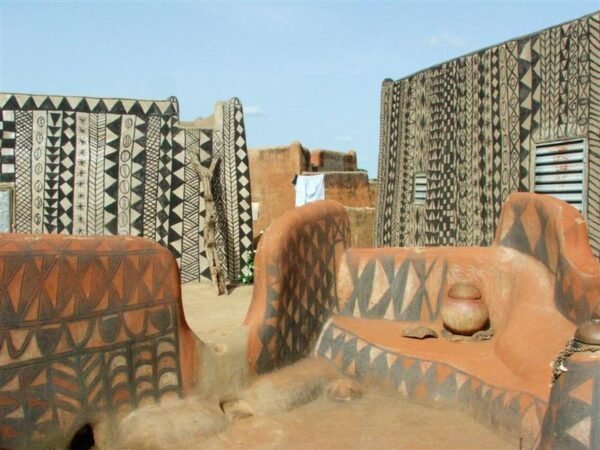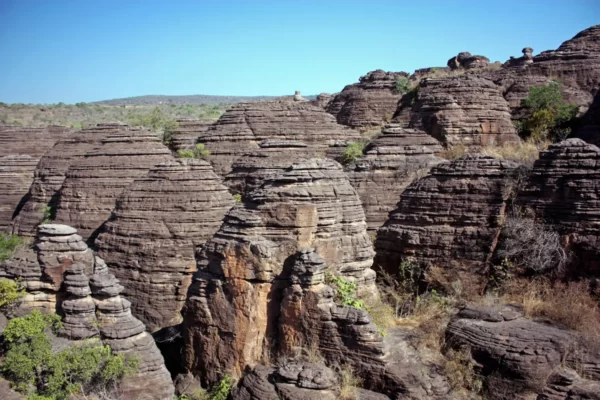Our Burkina Faso meal was Ragout D’Igname (traditional Burkinabé Yam Stew), Burkinabé Tô and Banfora (fried pastry with pineapple). We drank Bissap a la Bonne Dame (hibiscus tea with pineapple). We both liked the stew and plan to make it again. The Burkinabé Tô was quite a production. The recipe said to boil then simmer the sorghum flour, add butter and roll it in to balls. The consistency was like mush, no way it would form a ball. We added corn meal, set it outside in below zero temps hoping it would become more solid and then put it in mini muffin tins and cooked it. Still barely formed balls. But they were tasty. Not making that again. Another dish we want to try prepared by someone who actually knows what they are doing! WIth many of our meals I eat the dessert for breakfast the next day. This time we made the Banfora for breakfast and had the leftovers for dessert with the meal! They were yummy. Kind of like a scone.
Burkina means “land of honorable men” in the Mooré language and Faso means “fatherland” in Doula. It represents unity between the many ethnic groups. The capital of Burkina Faso is Ouagadougou. Written as Wogodogo in the Mòoré dialect (say that five times fast!), it means “You are welcome here at home with us”. Burikna is known for it’s arts and is home of Grande Marche, the largest craft market in Africa.
Different towns have very different types of architecture based on the primary tribe that live in the area. The village of Tiébélé is known for its homes elaborately painted by women in the community. Some date back to the 16th century. The Grand Mosque Bobo Dioulasso, constructed from 1812 to 1832, was made of mud brick and wooden beams. The capital of Ouagadougou has more modern buildings such as the Memorial of the Martyrs.
There are also some beautiful natural areas such as Karfiguela Falls, a series of waterfalls along the Komoe River in Southwestern Burkina Faso and the Fabedougou Domes in Zone du Bois preservation.



Grand Marche 
Tiébélé 
Tiébélé 
Tiébélé 
Grand Mosque in Bobo Dioulasso 
Ouagadougou. View of Place Memorial auz Heros Nationaux. 
Karfiguela Falls 
Fabedougou Domes



